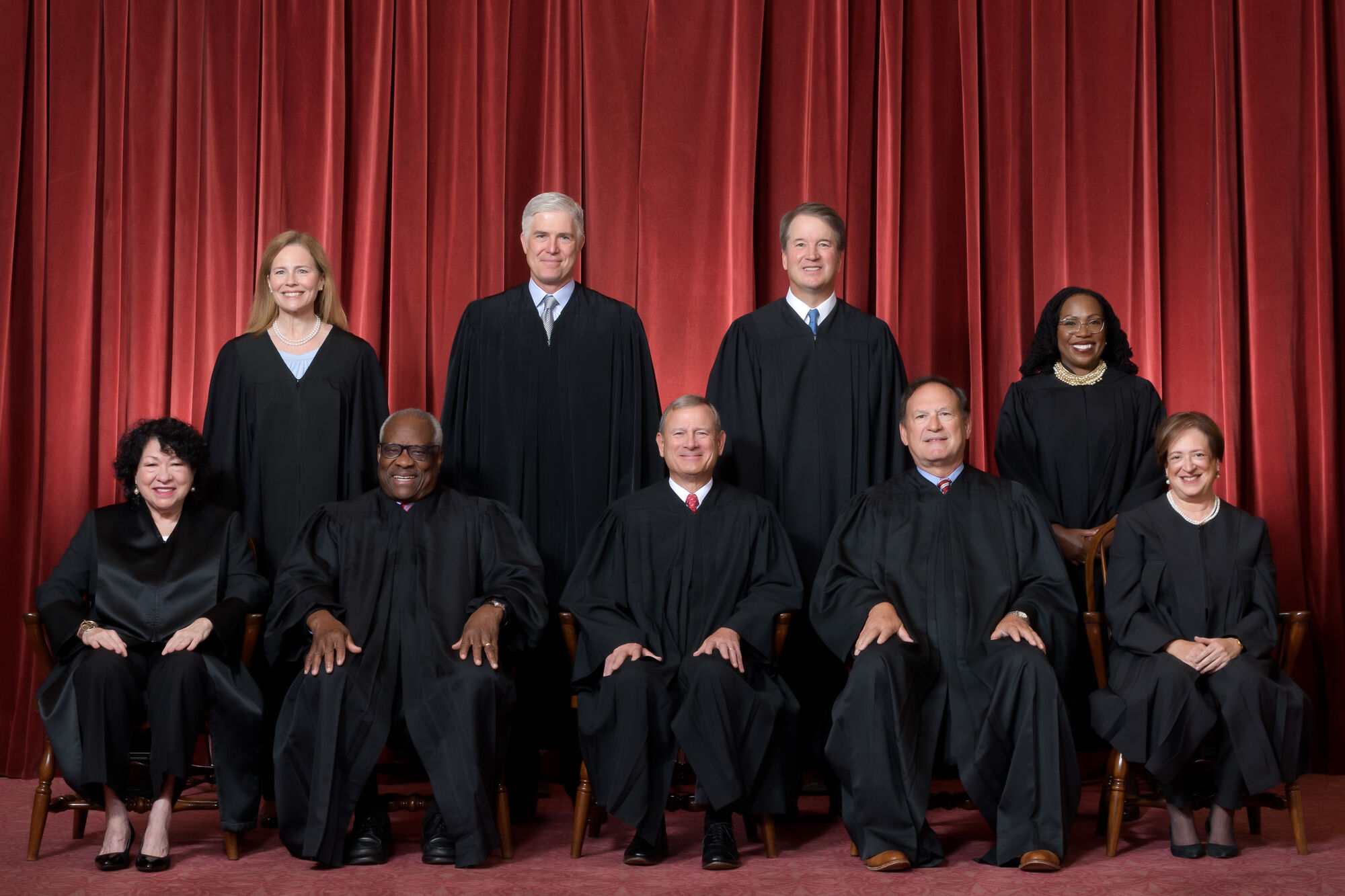
This month’s one-question survey asked NJC alumni what they thought of a proposed alternative to what have become hyper-partisan battles over nominations to the Supreme Court of the United States.
The idea: Eliminate lifetime appointments of justices and instead staff the court each term with nine or another odd number of judges drawn at random from the United States Courts of Appeals.
Supporters of the idea reason that if all judges are supposed to be impartial and nonpartisan, and since federal appellate judges have all been vetted and confirmed to lifetime appointments, it shouldn’t matter which nine hold the seats on the highest court each year.
From the perspective of political power, the change would prevent a party in control of the White House and Senate from installing a controlling ideological majority that could endure for decades (assuming the appointed justices ruled as expected). Without the possibility of establishing such control, the stakes in Supreme Court nominations would be lower, and, in theory, nomination fights wouldn’t be as intense.
NJC alumni weren’t buying it.
Nearly four out of five (78 percent) of the 535 judges who chose to participate in the emailed survey gave the proposal a thumbs down, with some dismissing the idea harshly.
“Worst idea I’ve heard in years,” wrote one anonymous judge among the more than 200 judges who left comments, mostly anonymously. “That would be insane,” declared another.
The objections mentioned most often involved fears of year-by-year reinterpretation of the Constitution and a lack of respect for precedence.
“If we think overturning precedent is a problem now, imagine what happens with a new crop of Justices every term,” one judge wrote.
Several judges said that rather than reducing politicization, such a system would simply change partisan battles over Supreme Court nominations into partisan battles over nominations to the Circuit Court of Appeals.
Another worried that a Supreme Court with rotating membership could lead to “judge shopping.”
“Litigants would strategically decide when to file cases or delay their progress in hopes of a panel more likely to rule in their favor,” the judge wrote.
Senior Judge Kitty Schild of El Paso County, Texas, wrote: “I gamble enough to know that over time – often a lot of time – randomness will even things out; however, in the short run, it could cause chaos. This scheme would also give unfair advantage to earlier administrations that had the opportunity to fill lots of (appellate) vacancies.”
Some judges worried that random appointments could result in lower-quality Supreme Court justices.
“(J)ust because someone is on the Court of Appeals does NOT mean they are SCOTUS material,” argued Judge Bob Scott of the Johnson County, Kansas, District Court. But Circuit Court Commissioner Sam Filippo of Saxon, Wisconsin, had the opposite view: “If a judge has made it to the Circuit Court of Appeals,” he wrote, “she/he is probably qualified to sit on the Supreme Court.”
Others pointed out that limiting future Supreme Court justices to judges seated on the federal appellate bench would eliminate potential nominees from lower federal courts, state courts, law professors and lawyers, all of whom have made distinguished Supreme Court justices in the past.
And the objections didn’t end there. Here are some of the others:
· Setting up the proposed scheme would likely require a constitutional amendment.
· It would disrupt the teamwork that ideally develops on an appeals panel whose members work together over many years.
· How would the resulting one-year vacancies on the Courts of Appeals be handled, and what about the clerks?
One group of judges dismissed the idea because they feel the system is already working as intended.
“It’s been the greatest legal system on the face of the earth for the last 233 years and 25 days,” wrote John H. Foradora, president judge of the Court of Common Pleas for Jefferson County, Pennsylvania. “It has stood the test of time and should not be changed for the flavor of the day.”
Among the 20+ percent who liked the proposal, many insisted that the system is broken and therefore needs to be changed. In the words of one anonymous judge, “Anything would help!”
These judges believed that a random rotation of federal appellate judges could depoliticize the nomination system and the court and improve ideological variability. One judge said the change could reassure the public about the independence of the judiciary.
As for fears that short-term justices would pay no heed to precedent, one supporter of the proposal wrote, “I believe the opposite. I think that the federal judges would be more likely to uphold precedent during their temporary term. We need change.”
Judges who weren’t sold on the proposal had plenty of other reform ideas.
Term and age limits were popular. One judge speculated that the proper term for a Supreme Court justice would be “long enough … to feel comfortable making correct but unpopular decisions but not so long that they come to believe in their own inviolability.”
Another liked the idea of expanding the size of the court and establishing overlapping terms of a predetermined length. Under this often-discussed framework, each president would have the opportunity to appoint a justice every two years.
Another judge proposed appointing each justice to a six-year term with potential renewal for a maximum of one additional six-year term – unless the justice were removed by a two-thirds vote of both houses of Congress. If that happened, the president would get to appoint a new justice – unless two-thirds of both chambers voted to deny the confirmation.
Petroleum County (Montana) Justice of the Peace William Menager said he favors keeping the current system but doing a better job of holding justices accountable for their actions.
“There has to be a process to remove Supreme Court justices just like there is for lower-level judges. And it needs to be used.”
* Each month the College emails an informal, non-scientific, one-question survey to its more than 12,000 judicial alumni in the United States and abroad. The results, summarized in the NJC’s Judicial Edge Today, are not intended to be characterized as conclusive research findings.

The National Judicial College has awarded Missouri Supreme Court Judge Mary Russell with the Sandra Day O�...

Emeritus Trustee Bill Neukom (left) with former Board of Trustee Chair Edward Blumberg (right) at the NJC 60...

The National Judicial College, the nation’s premier institution for judicial education, announced today t...

The National Judicial College (NJC) is mourning the loss of one of its most prestigious alumni, retired Uni...

As threats to judicial independence intensify across the country, the National Judicial College (NJC) today...